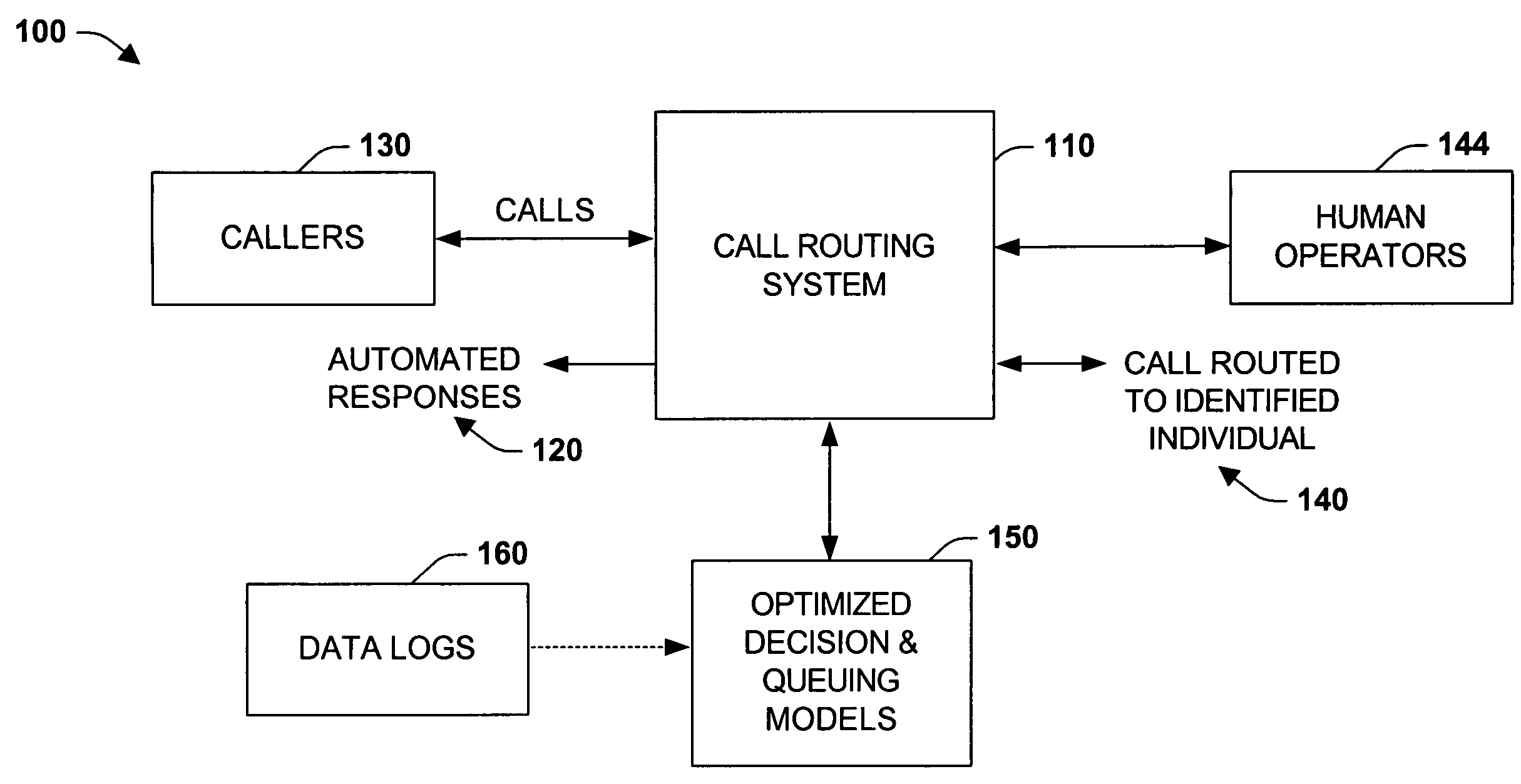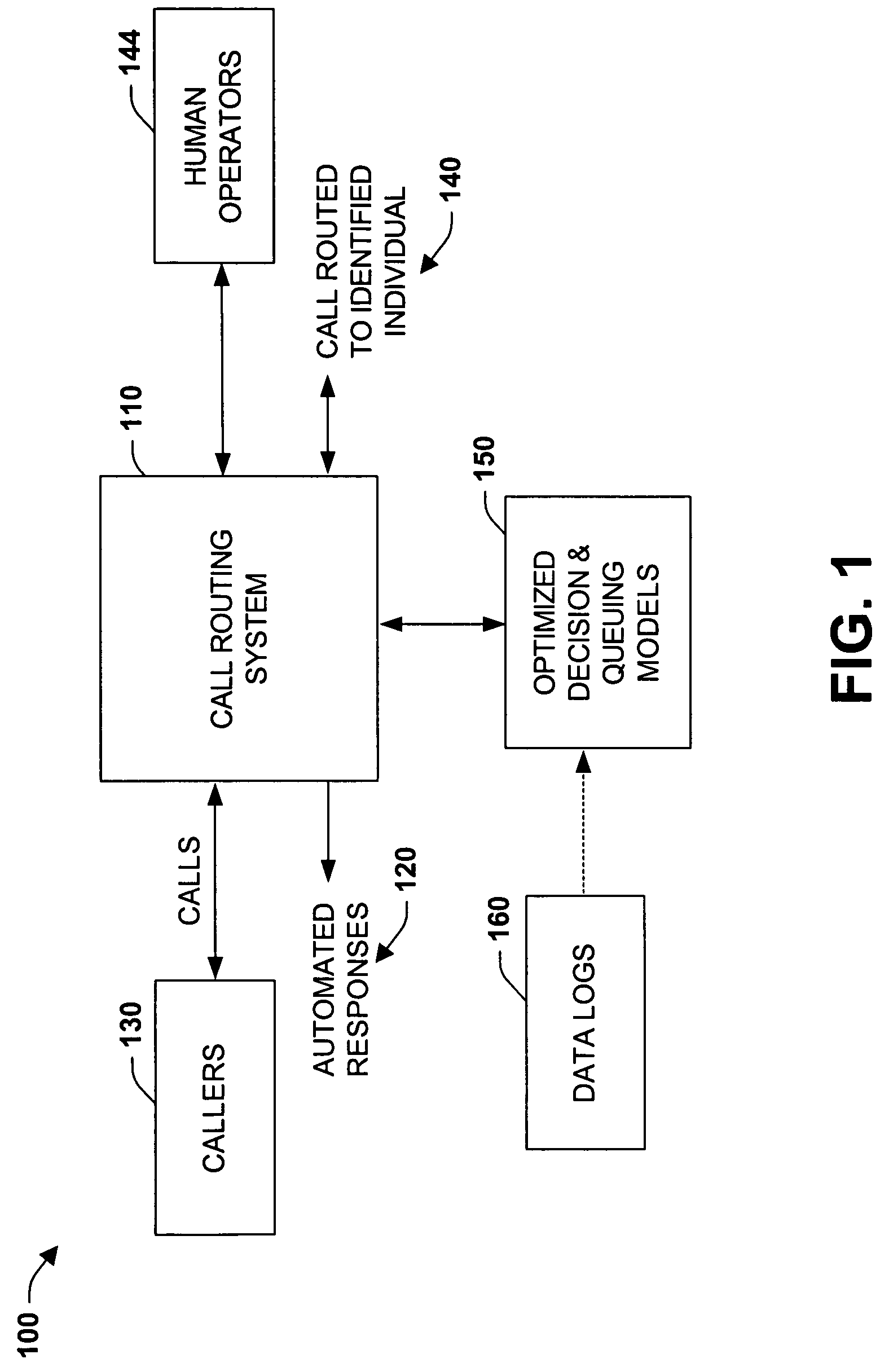Queue-theoretic models for ideal integration of automated call routing systems with human operators
- Summary
- Abstract
- Description
- Claims
- Application Information
AI Technical Summary
Benefits of technology
Problems solved by technology
Method used
Image
Examples
Embodiment Construction
[0019]The subject invention employs decision theory in connection with managing calls. More particularly, management of call traffic and handling of specific calls is important to many businesses, and the subject invention employs decision theory and queuing models in connection with optimizing handling of calls. In one aspect, an optimized procedure is provided, wherein decision models are employed to optimize system dispatch of calls to live operators in order to minimize support costs on an enterprise level while concurrently exploiting real time probabilities that the system will ultimately succeed.
[0020]As used in this application, the terms “component,”“model,”“system,” and the like are intended to refer to a computer-related entity, either hardware, a combination of hardware and software, software, or software in execution. For example, a component may be, but is not limited to being, a process running on a processor, a processor, an object, an executable, a thread of executi...
PUM
 Login to View More
Login to View More Abstract
Description
Claims
Application Information
 Login to View More
Login to View More - R&D
- Intellectual Property
- Life Sciences
- Materials
- Tech Scout
- Unparalleled Data Quality
- Higher Quality Content
- 60% Fewer Hallucinations
Browse by: Latest US Patents, China's latest patents, Technical Efficacy Thesaurus, Application Domain, Technology Topic, Popular Technical Reports.
© 2025 PatSnap. All rights reserved.Legal|Privacy policy|Modern Slavery Act Transparency Statement|Sitemap|About US| Contact US: help@patsnap.com



